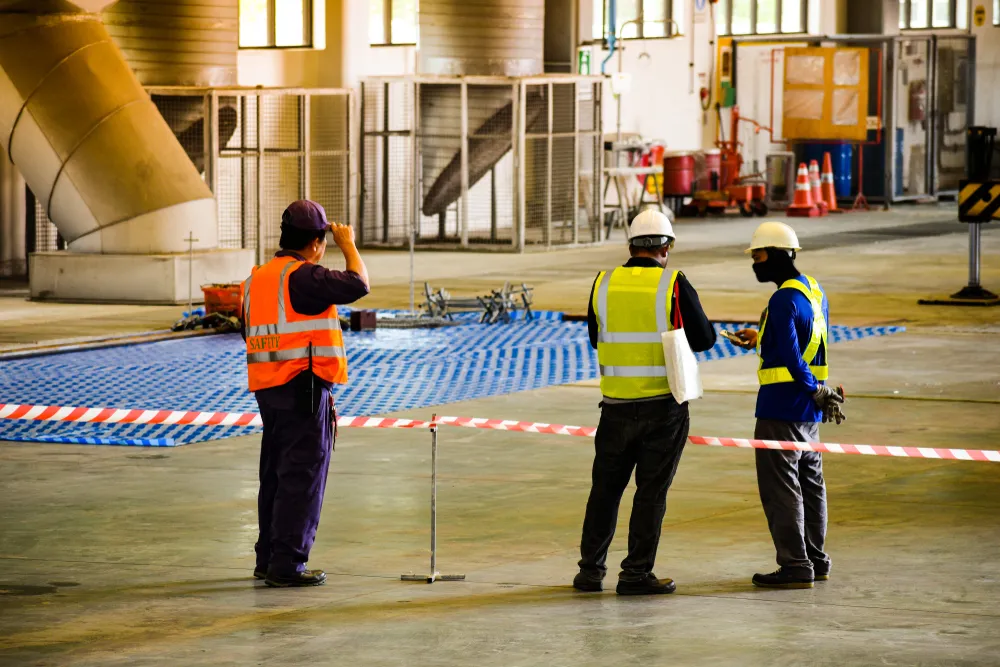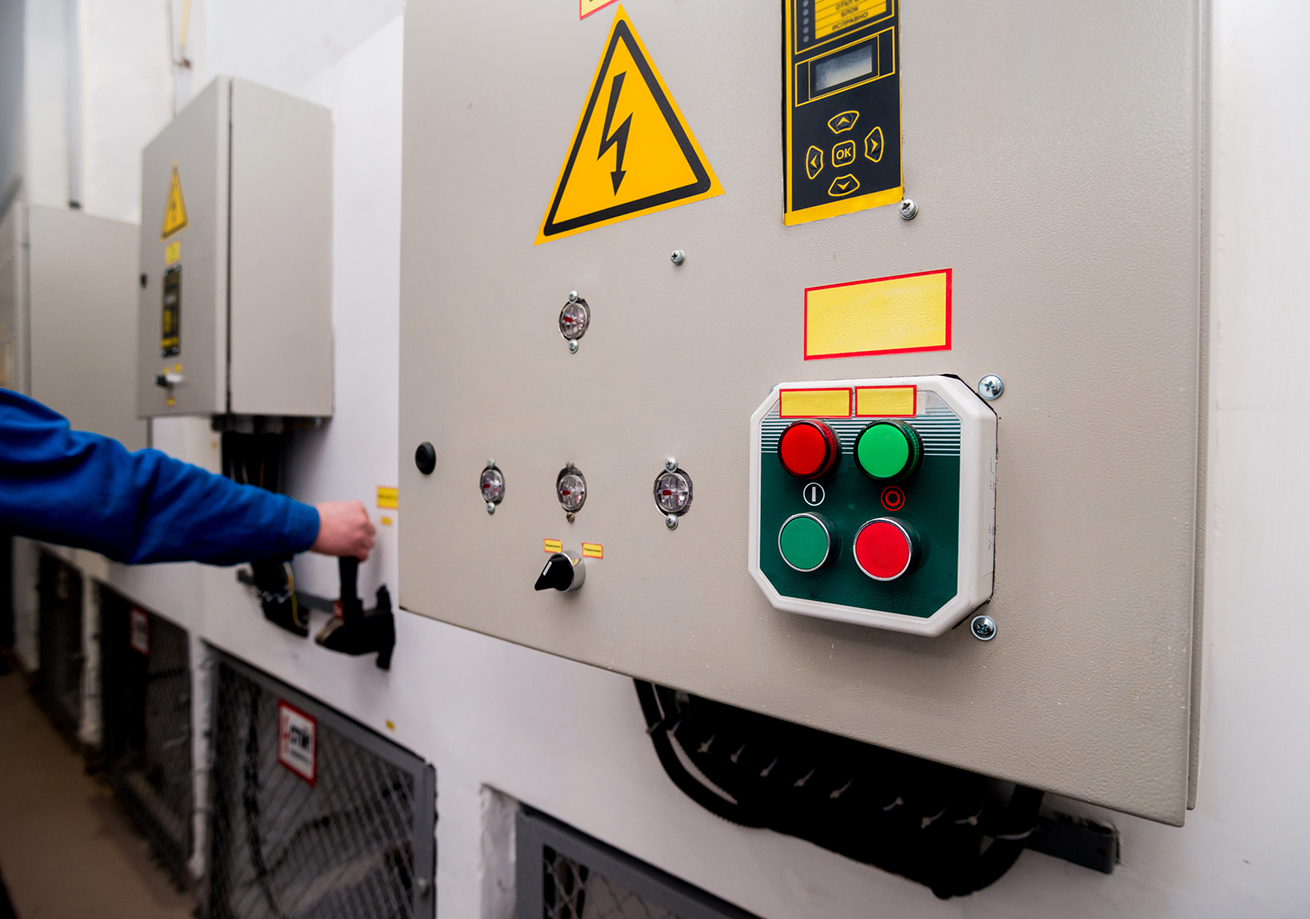The Definitive Guide to Roar Solutions
The Definitive Guide to Roar Solutions
Blog Article
Roar Solutions for Dummies
Table of ContentsThe smart Trick of Roar Solutions That Nobody is DiscussingA Biased View of Roar SolutionsRumored Buzz on Roar Solutions
In order to protect installations from a possible surge a method of analysing and categorizing a potentially harmful area is needed. The purpose of this is to make certain the appropriate selection and installment of equipment to ultimately prevent a surge and to guarantee safety and security of life.
(https://www.giantbomb.com/profile/roarsolutions/)
No devices must be mounted where the surface area temperature of the equipment is above the ignition temperature level of the given hazard. Below are some common dirt hazardous and their minimal ignition temperature level. Coal Dust 380C 225C Polythene 420C (thaws) Methyl Cellulose 420C 320C Starch 460C 435C Flour 490C 340C Sugar 490C 460C Grain Dust 510C 300C Phenolic Resin 530C > 450C Aluminium 590C > 450C PVC 700C > 450C Soot 810C 570C The possibility of the threat being present in a concentration high sufficient to trigger an ignition will differ from location to location.
In order to categorize this risk a setup is split into locations of threat relying on the amount of time the harmful exists. These areas are referred to as Zones. For gases and vapours and dusts and fibres there are three zones. Zone 0 Area 20 A hazardous atmosphere is extremely likely to be present and might exist for lengthy periods of time (> 1000 hours each year) or perhaps constantly Zone 1 Area 21 A harmful environment is possible yet unlikely to be present for extended periods of time (> 10 450 C [842 F] A classification of T6 indicates the minimum ignition temperature level is > 85 C [185 F] Harmful area electric equipment maybe made for use in greater ambient temperatures. This would certainly suggested on the ranking plate e.g. EExe II C T3 Ta + 60C( This implies at 60C ambient T3 will certainly not be surpassed) T1 T1, T2, T3, T4, T5, T6 T2 T2, T3, T4, T5, T6 T3 T3, T4, T5, T6 T4 T4, T5, T6 T5 T5, T6 T6 T6 A T Course ranking of T1 implies the optimum surface temperature level generated by the instrument at 40 C is 450 C. Assuming the connected T Course and Temperature score for the tools are suitable for the location, you can constantly make use of a tool with a much more strict Department rating than needed for the area. There isn't a clear solution to this concern however. It really does depend upon the kind of devices and what repairs require to be executed. Devices with specific examination procedures that can't be done in the area in order to achieve/maintain 3rd party score. Need to come back to the manufacturing facility if it is prior to the devices's solution. Area Repair Service By Authorised Employee: Complex screening might not be required nevertheless specific treatments may need to be adhered to in order for the equipment to maintain its 3rd party rating. Authorized employees must be used to carry out the job appropriately Repair should be a like for like substitute. New part need to be considered as a direct replacement needing no unique screening of the devices after the fixing is total. Each tool with a dangerous ranking need to be evaluated separately. These are laid out at a high degree listed below, but for more thorough details, please refer directly to the standards.
An Unbiased View of Roar Solutions
The tools register is an extensive database of devices records that includes a minimum set of areas to determine each item's place, technical criteria, Ex-spouse classification, age, and environmental information. The ratio of Detailed to Shut inspections will certainly be established by the Tools Danger, which is examined you can try this out based on ignition danger (the probability of a resource of ignition versus the possibility of a flammable environment )and the dangerous area classification
( Zone 0Area 1, or 2). Implementing a robust Risk-Based Evaluation( RBI )method is critical for guaranteeing conformity and safety in managing Electrical Devices in Hazardous Areas( EEHA).
Unknown Facts About Roar Solutions

In regards to explosive danger, an unsafe area is a setting in which an explosive atmosphere exists (or may be expected to be existing) in amounts that call for unique precautions for the construction, setup and use of devices. Roar Training Solutions. In this short article we explore the obstacles dealt with in the work environment, the threat control measures, and the required proficiencies to function safely
It issues of contemporary life that we make, store or handle a variety of gases or liquids that are regarded combustible, and a range of dirts that are deemed combustible. These substances can, in particular conditions, form eruptive atmospheres and these can have significant and tragic consequences. The majority of us know with the fire triangular remove any one of the three aspects and the fire can not happen, yet what does this mean in the context of dangerous locations? When damaging this down into its most basic terms it is essentially: a combination of a particular amount of launch or leak of a certain material or product, combining with ambient oxygen, and the existence of a source of ignition.
In the majority of circumstances, we can do little concerning the degrees of oxygen airborne, but we can have considerable influence on resources of ignition, as an example electric equipment. Hazardous locations are documented on the hazardous location classification drawing and are determined on-site by the triangular "EX" indicator. Below, amongst other key details, areas are divided right into three types depending on the hazard, the possibility and period that an eruptive atmosphere will certainly exist; Area 0 or 20 is deemed one of the most unsafe and Area 2 or 22 is considered the least.
Report this page